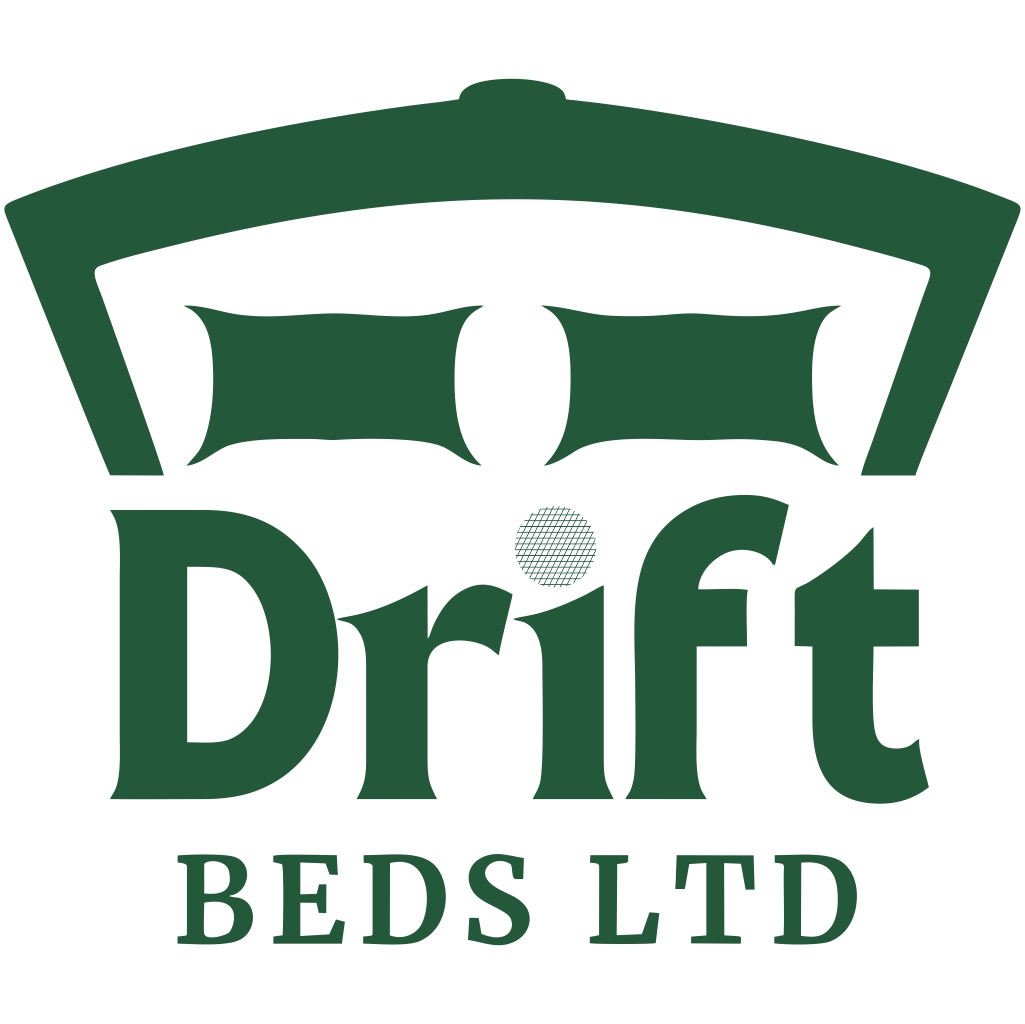Waking up with a throbbing hip isn’t just a bad start to your day; it’s a nightly thief of restorative sleep and daytime vitality. Many people with this discomfort find themselves in a frustrating cycle: the pain disrupts sleep, and poor sleep quality heightens pain sensitivity. The search for a solution often leads to a confusing marketplace where some advocate for a firm mattress while others insist a soft one is key.
This guide moves beyond simple product lists to provide a complete, evidence-based framework for finding lasting relief. Backed by insights from orthopedic specialists, physical therapists, and peer-reviewed research, this report details how to diagnose your unique needs to build a complete pain-free sleep system.
How Your Mattress Causes (or Cures) Hip Pain?
Your mattress plays a pivotal role in either aggravating or alleviating hip pain. An unsupportive or worn-out mattress can force your hips into unnatural positions, strain muscles, and ultimately worsen discomfort. A well-chosen mattress, however, provides the necessary support and cushioning to promote healing.
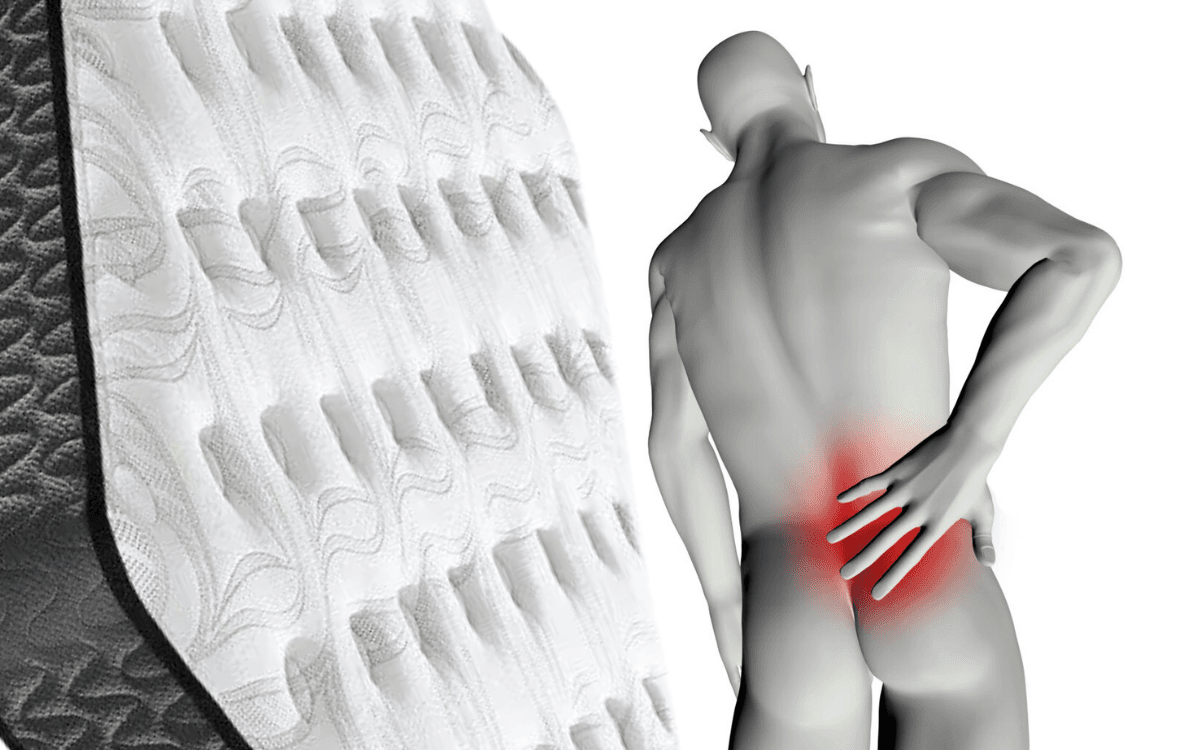
The Core Conflict: Pressure Relief vs. Spinal Alignment
The ideal mattress for hip pain must strike a delicate balance between cushioning the hip joint (pressure relief) and supporting the spine (spinal alignment). These two functions are the cornerstones of a pain-free night.
Pressure relief is the mattress’s ability to contour to your body’s curves, distributing weight evenly and reducing stress on prominent areas like the hips. For side sleepers with hip pain, this is critical. A mattress that’s too firm creates pressure points on the hip joint itself, leading to soreness and increased pain. Materials like memory foam and latex are excellent for their pressure-relieving properties.
Spinal alignment means keeping your spine in a neutral, straight line from head to pelvis. A mattress that’s too soft, while initially feeling cozy, allows your heavier hips to sink too deeply. This creates an unnatural curve in the spine, leading to strain and pain in both the hips and lower back. The solution is finding a mattress that harmonizes these two elements based on your body type and sleep style.
Why Your Sleeping Position is the Most Important Factor?
How you sleep determines where pressure concentrates on your body, making it a crucial factor in choosing the right mattress.
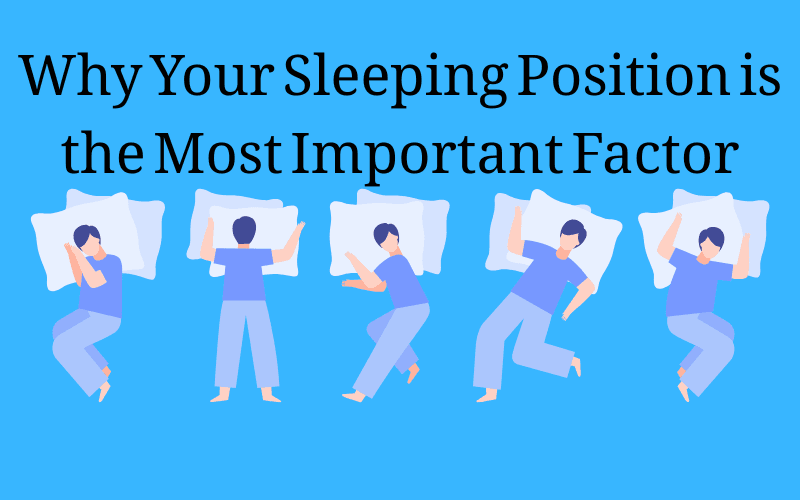
Side Sleepers
This common position places your full weight directly onto the hip and shoulder joints. Side sleepers need a mattress with significant cushioning—typically in the medium-soft to medium range—to allow these joints to sink in comfortably, relieving pressure while maintaining a straight spine.
Back Sleepers
Back sleeping distributes body weight more evenly and is great for spinal health. The main challenge is supporting the spine’s natural “S” curve. A medium-firm mattress is often ideal, as it’s firm enough to support the hips but has enough contouring to fill the small of your back.
Stomach Sleepers
Physical therapists often discourage this position as it can cause the back to arch and forces the head to one side. If you can’t change this habit, a firm to extra-firm mattress is non-negotiable to prevent your pelvis from sinking and causing strain.
Combination Sleepers
If you change positions at night, you need a responsive mattress. Materials like latex or hybrid designs allow for easy movement without feeling “stuck.” A medium-firm feel often provides a good compromise for multiple positions.
The Role of Body Weight in the Firmness Equation
Mattress firmness is relative. A mattress that feels firm to a lighter person may feel soft to a heavier one. Your body weight is a critical factor in finding the right support.
Lightweight Sleepers (under 130 lbs)
Lighter individuals don’t exert as much pressure and often need a softer mattress (4-5/10 firmness) to get enough contouring and pressure relief. A firmer mattress might not compress enough, creating pressure points.
Average-Weight Sleepers (130-230 lbs)
This group generally does well with the industry standard medium-firm mattress (6-7/10 firmness). This level typically provides the perfect balance of support and pressure-relieving contouring.
Heavyweight Sleepers (over 230 lbs)
Heavier individuals need a firmer, more durable mattress (7-9/10 firmness) to prevent excessive sinkage. These mattresses often feature robust support cores, like high-density foam or reinforced coils, to keep the spine aligned.
The Ultimate Mattress Firmness & Type Matrix for Hip Pain
To simplify your choice, this matrix provides personalized recommendations based on your sleep position and body weight. Find your profile to see which firmness and mattress type will likely work best for you.
| Your Profile | Ideal Firmness (1-10) | Recommended Mattress Type | Why It Works |
| Lightweight Side Sleeper | 4-5 (Medium-Soft) | Memory Foam or Soft Hybrid | Provides maximum pressure relief for the hip without feeling too firm for a lighter frame. |
| Average-Weight Side Sleeper | 5-6 (Medium to Medium-Firm) | Hybrid or Latex | Balances deep cushioning for the hip with robust support to keep the spine aligned. |
| Heavyweight Side Sleeper | 6.5-7.5 (Medium-Firm) | Durable Hybrid with Zoned Support | Needs a thick comfort layer for pressure relief and a strong coil system to prevent bottoming out. |
| Lightweight Back Sleeper | 5-6 (Medium) | Memory Foam or Hybrid | Offers enough contouring for the lumbar gap while properly supporting the hips. |
| Average-Weight Back Sleeper | 6-7 (Medium-Firm) | Hybrid, Latex, or Innerspring | The “sweet spot” that provides excellent spinal support with just enough cushioning. |
| Heavyweight Back Sleeper | 7-8.5 (Firm) | Firm Hybrid or Latex | Requires a very supportive surface to prevent the hips from sinking and misaligning the spine. |
| Stomach Sleeper (All) | 7-9 (Firm to Extra-Firm) | Firm Hybrid or Firm Latex | Must keep the hips elevated on top of the mattress to prevent the back from arching. |
Our Top-Rated Mattresses for Hip Pain in 2025 (Tested & Vetted)
Based on our framework, we tested dozens of mattresses to find the best performers for hip pain.
Best Overall: Saatva Classic
- Who it’s for: Back and combination sleepers of all weights, and side sleepers who prefer a responsive feel.
- Testing Experience: The “Luxury Firm” model showed exceptional pressure distribution in our tests, perfectly supporting the lower back while cushioning the hips. Its strong edge support is a plus for those with mobility issues.
- Key Features for Hip Pain:
- Zoned Lumbar Support: A reinforced center third prevents the hips from sinking too deeply, a common cause of pain.
- Coil-on-Coil System: A dual-coil design provides both deep support and targeted pressure relief.
- Multiple Firmness Options: You can choose the model that best matches your profile.
Best for Side Sleepers: Helix Midnight Luxe
- Who it’s for: Average-weight side sleepers needing significant pressure relief.
- Testing Experience: The plush pillow-top and multiple foam layers created a noticeable cradling effect around the hips and shoulders. It hits the “medium-firm” sweet spot (6/10) that feels cushioned but not engulfing.
- Key Features for Hip Pain:
- Zoned Coil Support: The coils are firmer under the hips for extra pushback where it’s needed most.
- Premium Foam Layers: A combination of foams cushions the hip joint while adapting to movement.
- Cooling Options: An optional cooling cover is great, as pain can be inflammatory.
Best for Pressure Relief: Softer WinkBed
- Who it’s for: Side sleepers and lighter-weight back sleepers who want a plush, deeply cushioning feel.
- Testing Experience: This “Softer” version (4/10 firmness) is exceptionally plush. Its Euro-top contours very closely, creating a cradling sensation that’s highly effective for sore joints.
- Key Features for Hip Pain:
- Deeply Contouring Euro-Top: A gel-infused polyfoam top provides immediate, cloud-like relief.
- Zoned Coil System: Despite its softness, a zoned coil system prevents the hips from sinking out of alignment.
- Exceptional Motion Isolation: Great for couples where one partner is a restless sleeper.
Best Value: Nectar Memory Foam Mattress
- Who it’s for: Budget-conscious shoppers who enjoy the classic, body-hugging feel of memory foam.
- Testing Experience: The Nectar offers a quintessential memory foam experience with a medium-firm feel (6.5/10). It effectively cradled the body and isolated motion well.
- Key Features for Hip Pain:
- Pressure-Relieving Memory Foam: The top layers conform closely to distribute weight and alleviate pressure.
- Supportive Base Foam: A high-density base prevents excessive sinkage.
- Generous Trial and Warranty: The 365-night trial and lifetime warranty reduce financial risk.
Beyond the Mattress: Building Your Pain-Free Sleep System
Finding the right mattress is step one. A truly effective solution requires a holistic approach to your entire sleep environment.
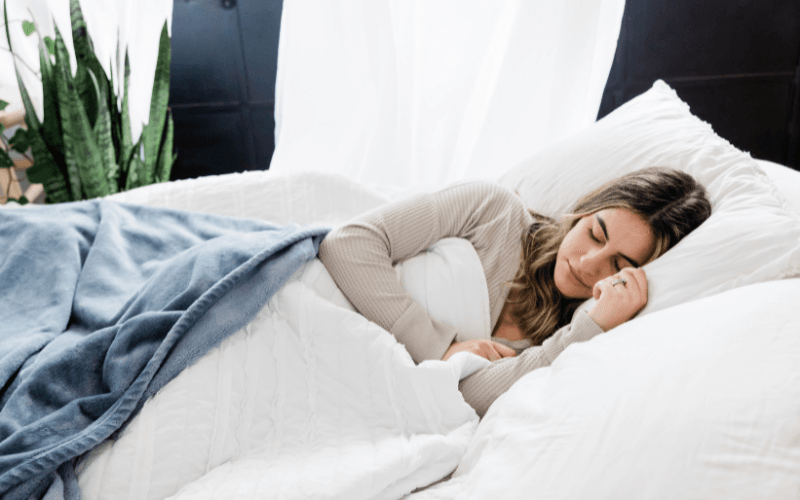
Why Your Bed Frame is a Non-Negotiable Part of the Solution?
The bed frame is the foundation. A weak or sagging base will cause even the best mattress to sag, leading to misalignment and pain. For foam and hybrid mattresses, ensure your frame has slats no more than 3 inches apart. A solid platform base is often the best choice for memory foam.
Can an Adjustable Bed Base Help Hip Pain?
For moderate to severe pain, an adjustable base can be transformative. The “Zero Gravity” position, which elevates the head and legs, distributes body weight evenly and dramatically reduces stress on the hips and lower back. This feeling of weightlessness can provide immediate relief and improve circulation.
The Final Piece: Strategic Pillow Placement for Perfect Alignment
Pillows are a simple, inexpensive way to fine-tune your alignment.
- For Side Sleepers: Place a firm pillow between your knees. This prevents the top leg from rotating the pelvis, which strains the hip joint.
- For Back Sleepers: Place a pillow under your knees. This helps maintain the natural curve of your lower back and can alleviate tension that contributes to hip discomfort.
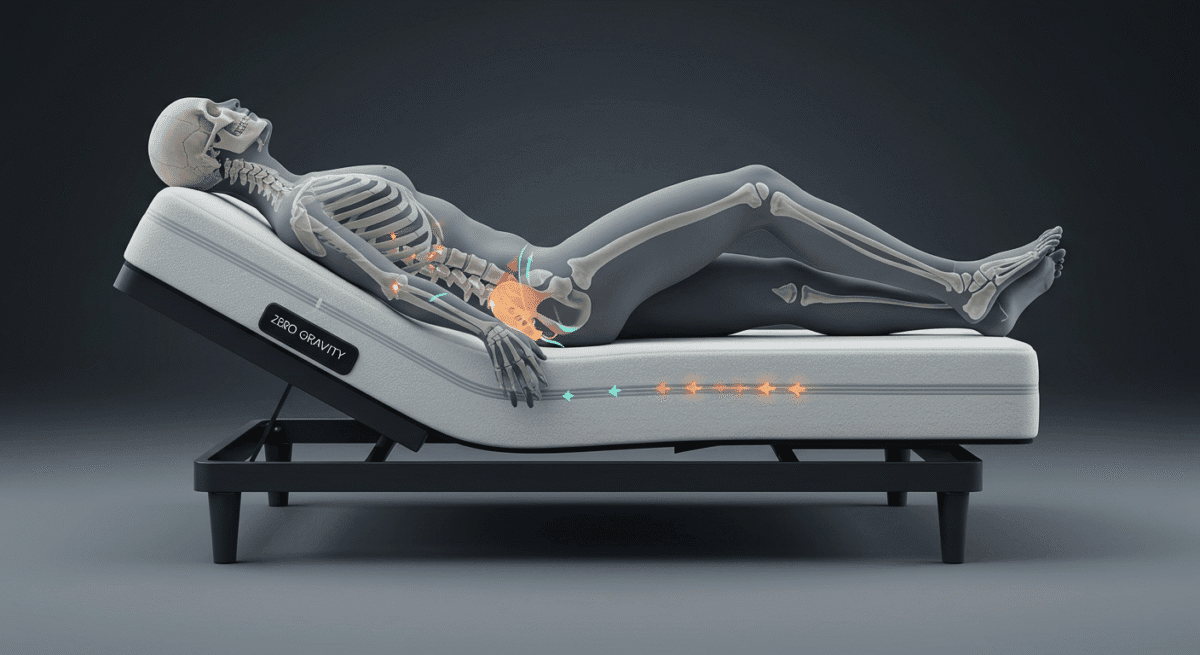
A Deeper Dive for Diagnosed Conditions
Understanding your specific condition can help refine your mattress choice.
Mattresses for Hip Osteoarthritis (OA)
OA is a “wear and tear” condition causing pain and inflammation. Look for:
- Exceptional Pressure Relief: Memory foam and latex are excellent for cushioning the painful joint.
- Cooling Properties: A mattress that sleeps cool (hybrids with good airflow or gel-infused foams) can be more soothing.
Mattresses for Bursitis and Tendinitis
These inflammatory conditions are highly sensitive to direct pressure. The primary goal is to minimize this pressure with a softer, highly contouring surface, like a plush memory foam or soft hybrid mattress. An overly firm mattress is the enemy here.
Mattresses for Sciatica and Radiating Pain
Sciatica is pain from a compressed nerve root. Relief comes from maintaining perfect spinal alignment. A medium-firm mattress with zoned lumbar support is typically best. This design keeps the hips lifted, decompressing the nerve.
5 Common Mistakes to Avoid When Buying a Mattress for Hip Pain
Avoid these common missteps to save yourself money and continued pain.
1: Ignoring Your Body Weight & Sleep Position
Don’t buy a mattress based on a generic recommendation. A bed that’s perfect for a 200-pound back sleeper will likely cause pain for a 130-pound side sleeper. Always start with your personal profile.
2: Believing “Firmer is Always Better”
This is a pervasive myth. An excessively firm mattress creates sharp pressure points and pain, especially for side sleepers and those with arthritis.
3: Believing “Softer is Always Better”
The opposite is equally dangerous. An overly soft mattress lacks support, causing your hips to sink out of alignment and leading to more pain.
4: Forgetting About Long-Term Durability
A mattress that feels great at first can sag within a few years if made with low-quality materials. High-density foams and natural latex offer greater durability. You can explore our full range of durable mattresses to find a long-lasting solution.
5: Not Reading the Fine Print on Sleep Trials and Warranties
The only way to know if a mattress works is to sleep on it. A sleep trial of at least 100 nights is essential. Understand the return policy before you buy—it’s your ultimate safety net. If you have any questions about our policies, feel free to contact us.
Frequently Asked Questions (FAQ)
For those with both hip and shoulder pain (almost always side sleepers), a hybrid mattress is often best. It combines thick comfort layers to cushion these pressure points with a supportive coil core to maintain alignment. A medium-soft to medium firmness (5-6/10) is typically ideal.
A topper can be a great short-term fix if your mattress is too firm. However, it’s a temporary solution. A topper cannot fix a sagging, unsupportive mattress—it will just sag along with it.
Seniors often benefit from a hybrid mattress with strong edge support, as it provides a stable surface for getting in and out of bed. An adjustable base can also be highly beneficial for managing arthritis pain.
Telltale signs include pain that’s worst upon waking and eases during the day, frequent repositioning at night, or visible sagging where your hips rest. If your mattress is over 7-8 years old, it’s likely time for a replacement. A new mattress from a reputable company like DriftBeds Ltd can make all the difference.
Both can be excellent. Memory foam offers superior pressure relief with a deep “hug,” while hybrids are more responsive and sleep cooler. For many, a hybrid offers the best of both worlds: the pressure relief of foam with the durable support of coils.
Finding the best mattress for hip pain is about understanding the balance between pressure relief and support. By matching a mattress’s firmness and type to your unique body profile and sleeping style, you can transform your bed from a source of pain into a therapeutic environment for recovery.
Use the guidance and matrix in this article to become an empowered problem-solver. By choosing a mattress that is soft enough to cushion your hip but firm enough to keep your spine aligned, you can finally start your journey to a pain-free morning.
